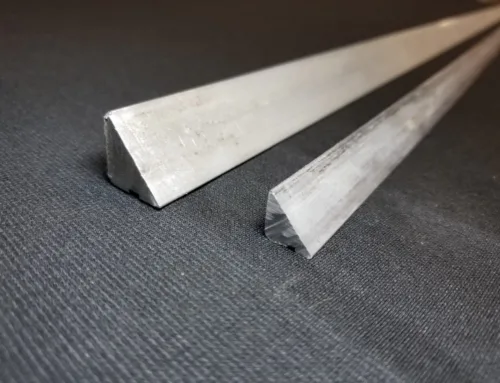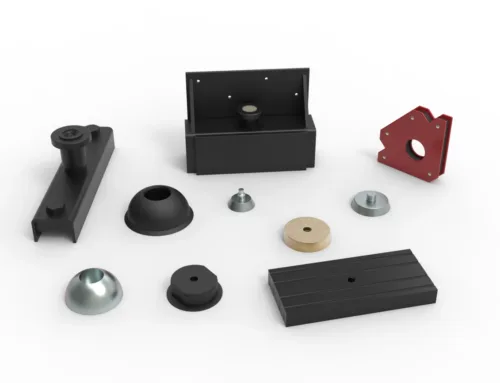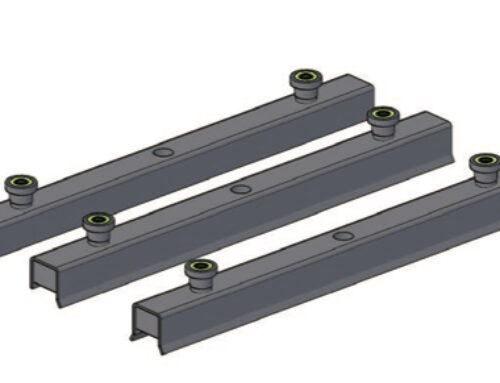Are you curious whether we can generate energy from magnets? It’s a question that pops up often, fueled by myths about “free energy” and dreams of endless power with no fuel. But what does science really say about magnets and energy?
In this post, we’ll cut through the confusion and explain the clear, proven science behind magnetic energy generation—why magnets alone can’t create energy, but how they play a vital role in generating electricity through electromagnetic induction. If you’ve ever wondered can magnets produce electricity or how permanent magnets in generators actually work, you’re in the right place.
As a trusted supplier of advanced magnetic materials for energy technologies, NBAEM is here to share insights from the frontline of innovation. We’ll explore real-world applications, debunk common myths, and help you understand why quality magnets matter for efficient, sustainable energy solutions.
Ready to separate fact from fiction and dive into the fascinating role of magnets in powering our world? Let’s jump in!
Understanding the Basics What Are Magnets
Magnets are objects that produce magnetic fields, invisible forces that can attract or repel certain materials. There are two main types of magnets: permanent magnets and electromagnets. Permanent magnets, like those made from rare earth materials or ferrites, maintain a constant magnetic field without any external power. Electromagnets, on the other hand, generate magnetic fields only when an electric current flows through a coil of wire.
The magnetic field created by these magnets interacts with magnetic materials such as iron, cobalt, and nickel. These materials are essential because they respond to magnetic forces, enabling the magnet’s influence to be harnessed in various applications.
At NBAEM, we specialize in high-quality magnetic materials designed for energy generation and industrial uses. Our permanent magnets are crafted for durability, strength, and stability—key features that make them ideal for efficient energy systems like generators and electric motors. Understanding the properties of these magnetic materials is crucial for developing reliable energy technologies and advancing renewable energy solutions.
Can Magnets Generate Energy on Their Own

No, magnets cannot generate energy all by themselves. This is because of the basic law of energy conservation, which says energy can’t be created from nothing—it only changes form. Magnets produce magnetic fields, but those fields don’t actually supply energy on their own.
You might have heard stories about free energy from magnets or machines that run forever without fuel, but these are myths. Perpetual motion machines, including magnetic motors that claim endless energy, break physical laws and don’t work in real life.
In short, magnets provide a magnetic field, which is useful for guiding energy flow, but they don’t create energy. Any useful energy you get involving magnets always comes from an external source like mechanical motion or electrical input.
How Magnets Help in Energy Generation

Magnets play a big role in turning mechanical energy into electrical energy, thanks to a process called electromagnetic induction. This process follows Faraday’s Law, which says that when a magnetic field moves past a conductor (like a wire), it creates an electric current. That’s how generators and alternators work. They use magnets spinning near coils of wire to generate electricity.
In simple terms, the movement of magnets and wires together creates the flow of electricity. This is the foundation for a lot of energy generation today.
You’ll find magnets at work in:
- Wind turbines – where wind spins blades connected to magnets in generators to create power
- Hydroelectric generators – water flow turns turbines with magnets producing electricity
- Electric motors – magnets help convert electrical energy back into mechanical energy to power machines and vehicles
So, while magnets don’t create energy on their own, their interaction with motion is essential for producing electric power efficiently.
The Importance of Magnetic Materials in Modern Energy Technologies
Magnetic materials play a huge role in how efficiently modern energy technologies work. There are different types of magnetic materials used in various applications, with rare earth magnets and ferrites being the most common.
- Rare earth magnets like neodymium and samarium-cobalt are super strong and compact, making them perfect for high-performance devices such as electric vehicle motors and wind generators. Their strength helps improve energy output and reduce size.
- Ferrites are less powerful but more affordable and resistant to corrosion, commonly found in everyday electronics and some types of generators.
The performance of these magnetic materials directly affects the efficiency and durability of things like generators and electric vehicles. Stronger, more stable magnets mean less energy wasted and longer-lasting equipment.
For businesses and engineers looking to optimize energy solutions, NBAEM offers a reliable supply of high-grade magnetic materials tailored for energy applications. Whether you need magnets for new energy vehicles or wind generators, NBAEM provides quality products that meet strict industry standards and help maximize your system’s performance.
Choosing the right magnetic materials is essential to advancing renewable energy tech and building reliable, cost-effective power solutions for the U.S. market.
Advanced Applications Magnets in Renewable Energy and Green Technologies
Magnets play a big role in today’s renewable energy and green tech. They’re key in wind power systems, electric vehicles (EVs), and energy storage devices, helping boost efficiency and reliability. For example, powerful rare earth magnets are used in wind turbines to convert wind into electricity smoothly and efficiently. Similarly, in electric vehicles, magnets help create strong, compact motors that deliver the performance drivers expect while using less energy.
Innovations in magnetic materials keep advancing. New magnetic alloys and improved designs lead to higher energy output, longer lifespans, and lighter components. This means renewable energy systems become more affordable and accessible, helping the U.S. shift toward cleaner power. Energy storage tech, like magnet-based flywheels and advanced battery systems, also benefits from better magnets, supporting stable power grids and off-grid solutions.
Cutting-edge uses of magnets are emerging, such as in magnetic refrigeration and wireless electric vehicle charging, pushing green tech into new frontiers. For businesses looking to stay ahead, working with suppliers like NBAEM for high-performance rare earth magnets can make all the difference in these fast-growing markets. Check out NBAEM’s expertise for magnets used in new energy vehicles to see what’s driving this innovation: https://nbaem.com/magnet-used-in-new-energy-vehicles/
Common Questions and Misconceptions About Energy from Magnets
There’s a lot of buzz around magnets and energy, so let’s clear up some common questions and myths based on real physics.
Can magnets generate endless energy?
No. Magnets create magnetic fields, but they don’t produce energy by themselves. The idea of “free energy” or perpetual motion machines using just magnets goes against the law of energy conservation. You always need an external energy source, like motion or fuel, to get usable electricity.
Do magnets lose their strength over time?
Yes, but very slowly. Permanent magnets can weaken if exposed to high heat, strong shocks, or opposing magnetic fields. However, quality magnets made from rare earth materials hold their strength for years, making them reliable for energy devices like generators and electric motors.
Are magnetic motors a real source of continuous power?
Magnetic motors that claim to run forever without input energy don’t work in practice. While magnets play a crucial role in motors by helping convert electrical energy to motion (or vice versa), they need an external energy source to keep running. Claims of self-powered magnetic motors are not supported by physics.
Why do we use magnets in energy generation if they don’t generate energy directly?
Magnets help convert mechanical energy into electrical energy through electromagnetic induction. This is the basis of how generators and alternators work. For more details on this, you can check out how magnets generate electricity.
The key takeaway: magnets are essential tools in generating energy but are not energy sources themselves. Understanding this helps distinguish real technologies from myths.
Choosing the Right Magnetic Materials Tips for Businesses and Engineers
Picking the right magnetic material can make all the difference in your energy project. Whether you’re working on a generator, electric vehicle, or renewable energy tech, here are the key things to keep in mind:
- Coercivity: This is how well a magnet resists losing its magnetism. For durable energy devices, higher coercivity means your magnet won’t weaken over time.
- Remanence: It shows how strong the magnetic field stays after magnetizing. Strong remanence helps in creating efficient generators and motors.
- Temperature Stability: Magnets can lose power if they get too hot. Depending on your application, picking materials that handle heat is crucial.
- Size and Shape: The physical size and shape influence how the magnet fits and works in your equipment. Custom sizes can improve performance.
NBAEM offers tailored magnetic solutions to fit these needs, especially for United States businesses looking for reliable, high-performance magnetic materials. They provide rare earth magnets and other magnetic materials designed for top efficiency, durability, and consistent power in energy applications.
Choosing the right material helps your project run smoothly, with less maintenance and better energy output. Reach out to NBAEM if you need expert guidance or materials suited for your energy generation goals.





Leave A Comment